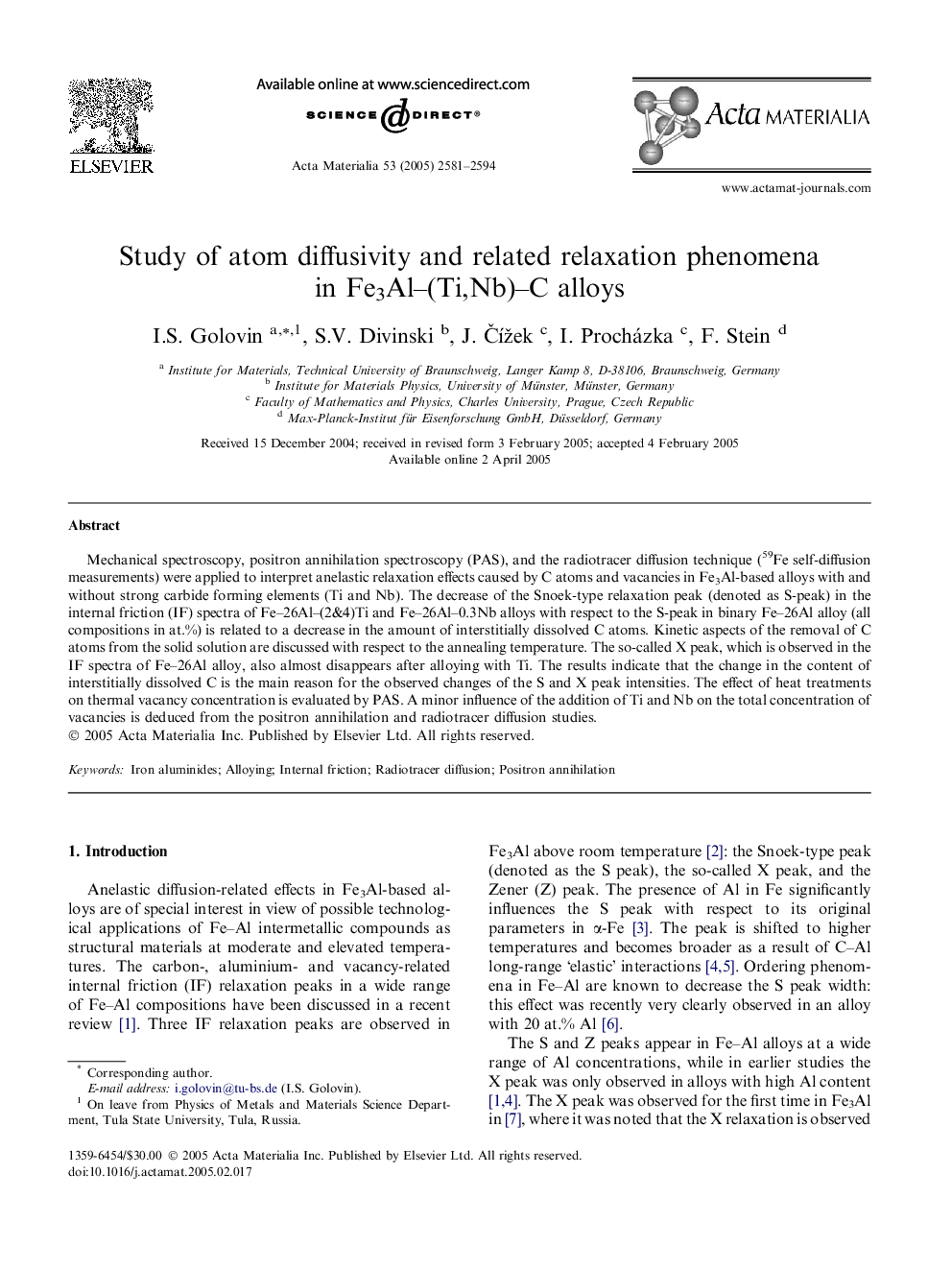| Article ID | Journal | Published Year | Pages | File Type |
|---|---|---|---|---|
| 1451353 | Acta Materialia | 2005 | 14 Pages |
Mechanical spectroscopy, positron annihilation spectroscopy (PAS), and the radiotracer diffusion technique (59Fe self-diffusion measurements) were applied to interpret anelastic relaxation effects caused by C atoms and vacancies in Fe3Al-based alloys with and without strong carbide forming elements (Ti and Nb). The decrease of the Snoek-type relaxation peak (denoted as S-peak) in the internal friction (IF) spectra of Fe–26Al–(2&4)Ti and Fe–26Al–0.3Nb alloys with respect to the S-peak in binary Fe–26Al alloy (all compositions in at.%) is related to a decrease in the amount of interstitially dissolved C atoms. Kinetic aspects of the removal of C atoms from the solid solution are discussed with respect to the annealing temperature. The so-called X peak, which is observed in the IF spectra of Fe–26Al alloy, also almost disappears after alloying with Ti. The results indicate that the change in the content of interstitially dissolved C is the main reason for the observed changes of the S and X peak intensities. The effect of heat treatments on thermal vacancy concentration is evaluated by PAS. A minor influence of the addition of Ti and Nb on the total concentration of vacancies is deduced from the positron annihilation and radiotracer diffusion studies.
